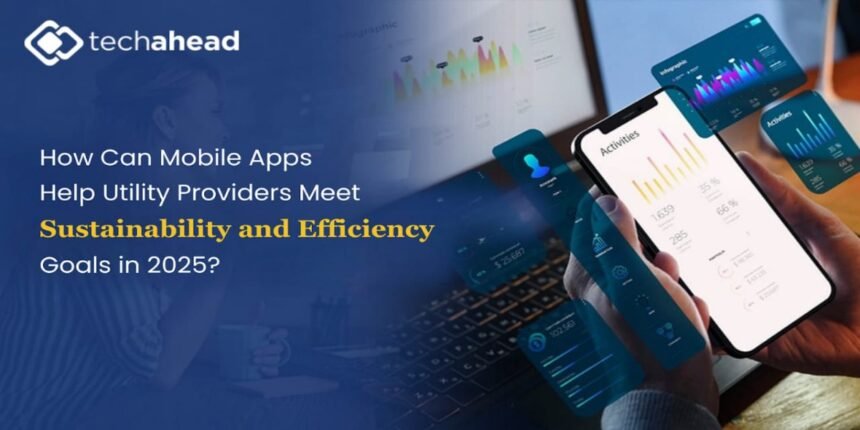Utility companies face way more than outages and meter readings. Pressure is growing to reduce emissions, follow through with sustainability obligations, and maintain uptime. On top of that, customers want everything to be faster, clearer, and have digital tools that they can use.
Infrastructure upgrades are still relevant and still matter, but they aren’t the answer anymore. The real progress often comes down to how fast teams respond. Most importantly, how clearly they see what’s happening in the field, and how efficiently they get things done. Mobile apps help make that possible.
This isn’t about chasing trends or planning for the distant future. It’s about solving problems today. In this article, we’ll show how utility companies are using mobile apps to improve field performance, reduce waste, and hit their sustainability goals faster.
Improving Field Operations Without Adding Resources
A lot of the strain falls on field crews. They cover wide areas, often with limited staff and no real-time updates. Mobile apps fix that gap. And when built by the right B2B app development company, these apps go beyond simple job lists. They provide:
Real-time access to work orders and data
Technicians receive updates instantly in job priority or location. They get the full picture on their devices. They can also access maps, asset history, and checklist templates without returning to the office.
Smarter routing cuts unnecessary travel
The app knows where crews are and what’s nearby. When a job is created, it gets assigned to the nearest available crew. This can reduce travel time, cut any excess fuel use, and even speed up the response without the need of any extra hands.
Monitoring Assets and Infrastructure Remotely
When you rely on manual checks and old reporting methods , it slows everything down. By pairing IoT sensors with mobile visibility, utilities get immediate insight into infrastructure conditions. These capabilities include:
Sensors and app integration for early detection
If pressure, voltage, or temperature levels change, the app sends an alert directly to the right team so they can act quickly. These alerts include exact location data, making it easier to assign the job and send the right people.
Quick actions to keep the systems up
Teams get the data they need as things happen, along with clear steps to follow. Meaning, faster fixes and fewer delays without relying on anyone to file a report first.
Smart Consumption
Most often people do not think much about how they use energy or water until the bill shows up. Once it’s on their credit card or paid out of their account, it’s too late to do anything about it. This is where a good app can make a real difference.
Users don’t have to speculate on what’s happening anymore. They can just open the app and see where their usage is geographically at that point in time. Users have the ability to set usage limits, receive notifications if anything changes, and see abnormal spikes and fix them before they become a problem for the site.
It’s a simple way to keep users informed and in control with no need to go through numbers or wait for the end of the month to reflect back on.
Easy Reporting and Fast Exports
Each report includes the time and location by default, making it easy to review and trace what happened later. Once everything’s filled out, exporting the data takes just a few steps. Whether it’s for an internal check or a regulatory review, the process is simple and leaves less room for error.
No More Load Spikes
When energy demand jumps, there’s not much time to react. If teams are out of sync or waiting on reports, things can slip fast. A mobile app keeps everyone in the loop, so they can respond before small issues turn into real problems.
Supervisors can monitor load levels and overall system status from their phones while on the go as well. If anything crosses a limit, the app can tag it, create a task and assign it to the nearest technician. Everyone gets what they need to keep the system healthy, even under high pressure situations.
Why the Right Partner Makes a Difference
Building apps for utilities isn’t like building one for retail or banking. Field conditions are tougher. Connectivity is spotty, and security is non-negotiable. A good partner knows what real-world reliability looks like. Here’s what that means:
Built for reliability and integration
An experienced Energy and Utilities App Development Company knows how to develop software that actually holds up in the field. Their apps work offline, sync when they reconnect, and plug into your existing systems without breaking them.
Scalable per your needs
Whether you’re rolling out EV support, adding solar visibility, or tracking carbon metrics, the right architecture keeps everything flexible without starting from zero.
Last Say
Achieving sustainability and efficiency goals usually comes from fixing the small things, not from starting everything from scratch. Mobile apps give utility providers that edge. They can help utilities reduce response times, waste less resources, and allow for more accurate decision-making.
Whether it is optimizing a crew’s schedule or providing customers with timely usage information, the results are measurable and immediate. For utilities that want to move faster without sacrificing control, investing in an appropriate mobile application platform will be a smart next move.
Also Read: Best Android Emulators for Mac to Run & Test Mobile Apps







